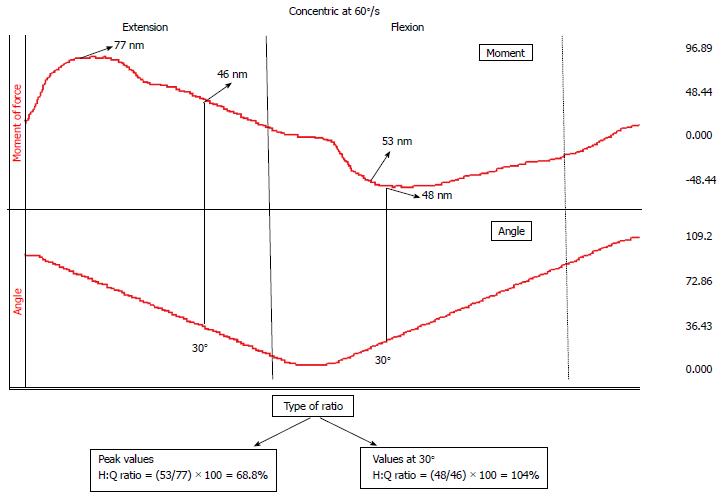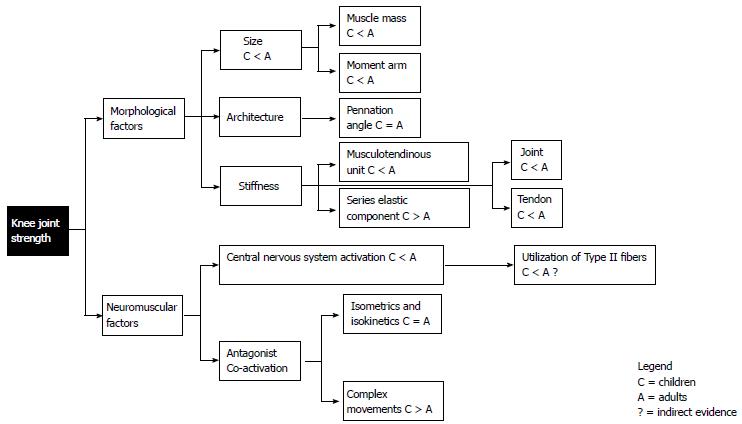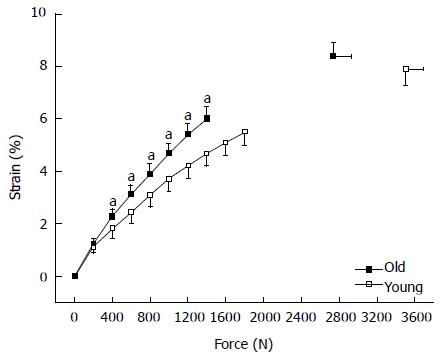Copyright
©2014 Baishideng Publishing Group Inc.
World J Orthop. Sep 18, 2014; 5(4): 469-485
Published online Sep 18, 2014. doi: 10.5312/wjo.v5.i4.469
Published online Sep 18, 2014. doi: 10.5312/wjo.v5.i4.469
Figure 1 An example of different methods to calculate the hamstrings:quadriceps ratio.
The raw data from moment of force (upper line) and angular position (lower line) as recorded from an isokinetic concentric knee extension-flexion trial. Using peak moment values results to a different ratio value compared with that obtained using values at a knee flexion angle of 30°. H: Hamstrings; Q: Quadriceps.
Figure 2 Schematic summary of comparison between children (C) and adults (A) regarding factors influencing knee joint strength.
Figure 3 Strain-force curves of the vastus lateralis tendon and aponeurosis.
The strain values at every 200 N and at maximum calculated tendon force during maximal voluntary isometric knee flexion contraction are displayed. The curves end at 1400 N for the old adults and at 1800 for the young ones, these values correspond to the maximum common force achieved by all subjects in either group, old and young adults. Y: Young (n = 12); O: Old adults (n = 14); Means and SEM; Age effect: (aP < 0.05) vs young.
- Citation: Kellis E, Mademli L, Patikas D, Kofotolis N. Neuromuscular interactions around the knee in children, adults and elderly. World J Orthop 2014; 5(4): 469-485
- URL: https://www.wjgnet.com/2218-5836/full/v5/i4/469.htm
- DOI: https://dx.doi.org/10.5312/wjo.v5.i4.469











